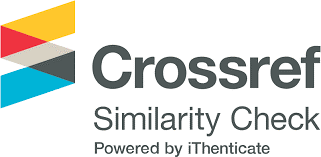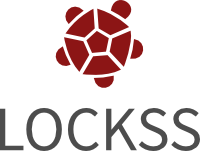The Complex Controller Applied To The Induction Motor Control
DOI:
https://doi.org/10.18618/REP.2009.3.201209Keywords:
Complex gain controller, Complex Transfer Function, Direct torque control, Field orientation, Induction Motor ControlAbstract
This paper presents a design and tuning method of the complex gain controller, based on the three-phase induction motormathematicalmodel complex transfer function to be used in induction motor control when the machine operates at low speed which is a problem so far. The complex gain controller was applied in the direct rotor field orientation controlmethod and also on the direct torque control method. It was designed and tuned using the frequency-response function of the closed loop system. The complex gain controller presents low complexity in the inductionmotor control implementation. Experimental results were carried out for the controller validation.
Downloads
References
P. K. Kovács and E. Rácz.Transient Phenomena inElectrical Machines.Amsterdam, The Netherlands:Elsevier, 1984.
S. Yamamura.Spiral Vector Theory of AC Circuits andMachines. Clarendon Press OXFORD, 1992. https://doi.org/10.1093/oso/9780198593799.001.0001
J. Holtz. The representation of ac machine dynamics bycomplex signal flow graphs.IEEE Trans. Ind. Electron.,42:263-271, June 1995. https://doi.org/10.1109/41.382137
M. M. Cad and M. L. de Aguiar. The concept of complextransfer functions applied to the modeling of inductionmotors.IEEE Winter Meeting 2000 of the IEEE PowerEngineering Society, 2000. https://doi.org/10.1109/PESW.2000.849995
F. Blaschke. The principle of field orientation control asapplied to the new transvector closed loop control systemfor rotating machines.Siemens Review, 39(5):217-220,March/April 1977.
D. W. Novotny and T. A. Lipo.Vector Control andDynamics of AC Drives. Clarendon Press OXFORD,1996. https://doi.org/10.1093/oso/9780198564393.001.0001
F. Briz, M. W. Degener, and R. D. Lorenz. Analysis anddesign of current regulators using complex vectors.IEEETrans. Ind. Applicat., 32:817-825, May-June 2000. https://doi.org/10.1109/28.845057
J. Holtz, J. Quan, J. Pontt, J. Rodríguez, P. Newman,and H. Miranda.Design of fast and robust currentregulators for high-power drives based on complex statevariables.IEEE Trans. Ind. Applications, 40:1388-1397,September/October 2004. https://doi.org/10.1109/TIA.2004.834049
A. C. Oliveira, A. M. N. Lima, and C. B. Jacobina. Controladores digitais de corrente para máquina deindução.Eletrônica de potência, 1(1):43-48, Junho1996. https://doi.org/10.18618/REP.1996.1.043048
S.-M. Yang and C.-H. Lee. A deadbeat current controllerfor field oriented induction motor drives.IEEE Trans. onPower Electronics, 17(5):772-778, 2002. https://doi.org/10.1109/TPEL.2002.802182
E. Cerruto, A. Consoli, A. Raciti, and A. Testa. Fuzzyadaptive vector control of induction motor drives.IEEETrans. on Power Electronics, 12(6):1028-1040, 1997. https://doi.org/10.1109/63.641501
L. Harnefors and H.-P. Nee.Model-based currentcontrol of ac machines using the internal model controlmethod.IEEE Trans. Ind. Applications, 34(1):1028-1040, January-February 1998. https://doi.org/10.1109/28.658735
R. Kennel and A. Linder.Model predictive controlfor electrical drives.Power Electronics SpecialistsConference-PESC, 13(4):1793-1799, 2005. https://doi.org/10.1109/PESC.2005.1581874
I. Takahashi and T. Noguchi.A new quick-responseand high-efficiency control strategy of an inductionmotor.IEEE Trans. Ind. Applications, IA-22(5):820-827,September-october 1986. https://doi.org/10.1109/TIA.1986.4504799
M. Depenbrock. Direct self-control (dsc) of inverter-fed induction machine.IEEE Trans. Power Electronics,3(4):420-429, october 1988. https://doi.org/10.1109/63.17963
J. H. Ryu, K. W. Lee, and J. S. Lee. A unified fluxand torque control method for dtc-based induction-motordrives.IEEE Trans. on Power Electronics, 21(1):234-242, January 2006. https://doi.org/10.1109/TPEL.2005.861176
Y. Xue, X. Xu, T. G. Habetler, and D. M. Divan. Alow cost stator flux oriented voltage source variablespeed drive.Conference Record of the 1990 IEEEIndustrial Aplications Society Annual Meetting, 1:410-415, October 1990. https://doi.org/10.1109/IAS.1990.152218
D.M. Stojic and S. N. Vukosavic. A new induction motordrive based on the flux vector acceleration method.IEEETrans. Ind. Applications, 20(1):173-180, March 2005. https://doi.org/10.1109/TEC.2004.841505
J. Maes and J. Melkebeek. Discrete direct torque controlof induction motors using back emf measurements.IEEEIAS Annual Meeting, 1:407-414, 1998. https://doi.org/10.1109/IAS.1998.732335
J. H. Lee, C. G. Kim, and M. J.Youn.A deadbeattype digital controller for the direct torque control ofan induction motor.IEEE Trans. on Power Electronics,17:739-746, September 2002. https://doi.org/10.1109/TPEL.2002.802174
C. Lascu, I. Boldea, and F. Blaabjerg. Direct torquecontrol of sensorless induction motor drives: a slidingmode approach.IEEE Transactions on IndustryApplications, 40(2):582-590, 2004. https://doi.org/10.1109/TIA.2004.824441
M. V. Lazarini and E. Ruppert Filho. Induction motorcontrol didactic set-up using sensorless and sliding modedtc strategy.Eletrônica de Potência, 13(4):291-299,Novembro 2008. https://doi.org/10.18618/REP.2008.4.291299
P. Correa, M. Pacas, and J. Rodríguez. Predictive torquecontrol for inverter-fed induction machines.IEEE Trans.on Power Electronics, 54(2):1073-1079, 2007. https://doi.org/10.1109/TIE.2007.892628
P. Z. Grabowski, M. P. Kazmierkowski, B. K. Bose, andF. Blaabjerg. A simple direct-torque neuro-fuzzy controlof pwm-inverter-fed induction motor drive.IEEE Trans.Ind. Electronics, 47(1):863-870, 2000. https://doi.org/10.1109/41.857966
M. Schroedl. Sensorless control of ac machines at lowspeed and standstill basedon the inform method.IEEEIndustry Applications Conference, 1:270-277, October1996. https://doi.org/10.1109/IAS.1996.557028
H. Kubota, I. Sato, Y. Tamura, K. Matsuse, H. Ohta,and Y. Hori. Regenerating-mode low-speed operationof sensorless induction motor drive with adaptiveobserver.IEEE Transactions on Industry Applications,38(4):1081-1086, July-August 2002. https://doi.org/10.1109/TIA.2002.800575
B. H. Kenny and R. D. Lorenz.Stator and rotorflux based deadbeat direct torque control ofinductionmachines.IEEE Industry Applications Conference,1:133-139, Oct.-Nov. 2001. https://doi.org/10.1109/IAS.2001.955403
D. Casadei, G. Serra, and A. Tani.Steady-state andtransient performance evaluation of a dtc scheme in thelow speed range.IEEE Trans. on Power Electronics,16(6):846-851, November 2001. https://doi.org/10.1109/63.974383
W. Leonhard.Control of Electrical Drives. Springer-Verlag Berlin Heidelberg New York Tokyo, 1985.
A. J. Sguarezi Filho. O controlador complexo aplicado aocontrole vetorial do motor de indução. Mastert's thesis,FEEC-Unicamp, 2007.
H. Tajima and K. Hori. Speed sensorless field orientationcontrol of the induction machine.IEEE IndustryApplications Society Annual Meeting, 1:385-391, 1991. https://doi.org/10.1109/28.195904
J. Hu and B. Wu.New integration algorithms forestimating motor flux over wide speed range.IEEETrans. on Power Electronics, 13(5):969-977, September1998. https://doi.org/10.1109/63.712323
C. Phillips.Feedback Control Systems. Pretince Hall,2000.
K. Ogata.Engenharia de Controle Moderno. LTC, 2000.
G. Buja and R. Menis.Steady-state performancedegradation of a dtc im drive under parameter andtransduction errors.IEEE Transactions on IndustrialElectronics, 55(4):1749-1760, 2008. https://doi.org/10.1109/TIE.2008.917112
Downloads
Published
How to Cite
Issue
Section
License
Copyright (c) 2009 Revista Eletrônica de Potência

This work is licensed under a Creative Commons Attribution 4.0 International License.















